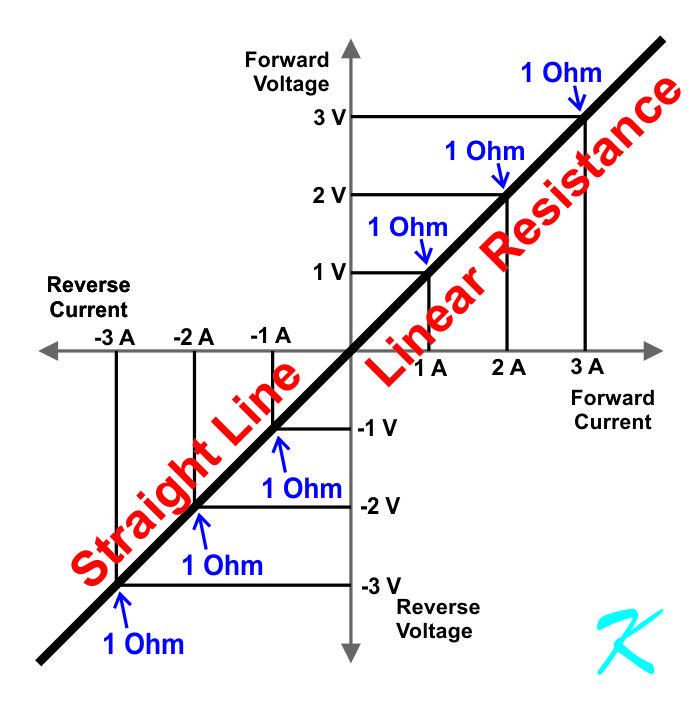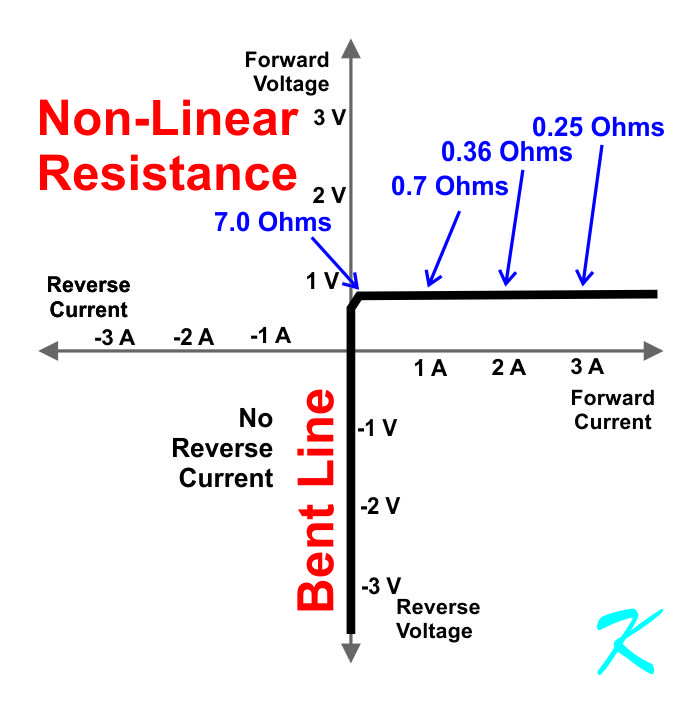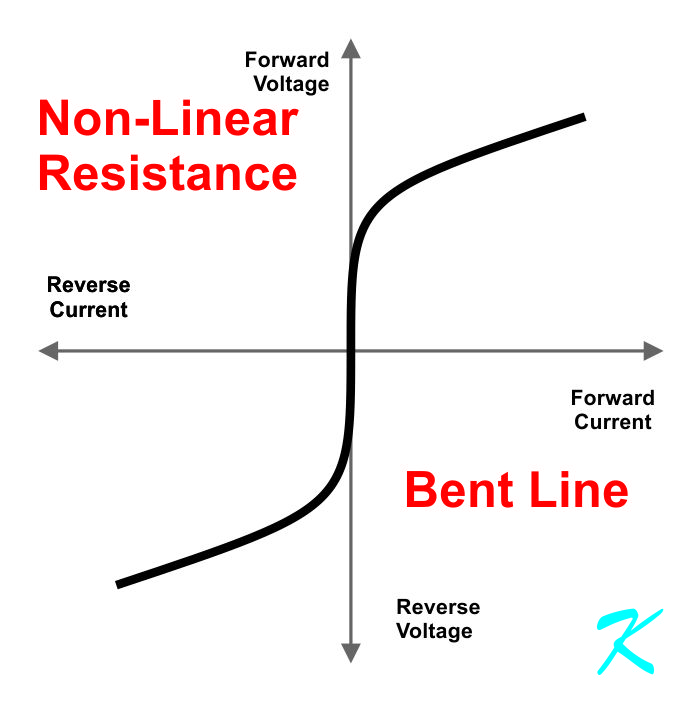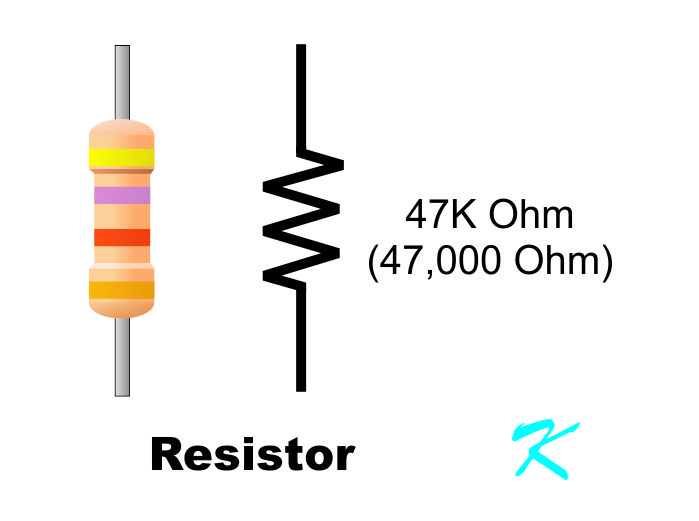Is Water a Non-Linear Resistor?
By Douglas Krantz |
Electronics
Almost all electronic technicians have worked with non-linear resistors. One commonly used non-linear resistor is a Silicon PN-Junction Diode.
To understand a non-linear resistor, we'll start out with a device we normally think of as a resistor.
A resistor is a high resistive device between two low resistance wires.
When the voltage is forward through the resistor, Ohms Law shows a relationship between voltage, current, and resistance. When the voltage doubles, the current doubles, but the resistance remains the same.
When there's zero volts, there's zero current.
If the voltage reverses, Ohm's Law still shows the same relationship. When the voltage doubles, the current doubles, and the resistance stays the same.
Linear Relationship

Ohm's Law Applies. When plotted on a graph, a 1 Ohm resistor will have a straight-line (linear) relationship between voltage and current. At 1 Volt, there will be 1 Amp of current. If the voltage triples to 3 Volts, the current will triple to 3 Amps, because the resistance stays at 1 Ohm.
The resistance does not change as the voltage changes; the resistance is linear.
Non-Linear Relationship

Ohm's Law still applies. When forward biased, a silicon diode will start conducting as the voltage across the diode is increased toward 0.7 volts. The current is very low as it starts to conduct. As the voltage is increased a very small amount towards 0.7 volts, the current increases many times.
0.7 Volts is often called a knee, where the graph of resistance is sharply bent. When the voltage is increased across the knee, the current increases rapidly with even a very small increase in voltage.
In order for the current to increase so rapidly, while the voltage across the diode has barely increased, the resistance of the diode has to decrease... lots.
Then again, if the forward voltage across the silicon diode is below 0.4 volts, or if the voltage is reverse biased, the current through the diode is not measurable. The resistance is basically infinite.
The resistance changes as the voltage changes; the resistance is non-linear.
No, this is not the graph for a 1N4007 diode. A 1N4007 diode would burn out above 1 Amp of current. This is a general idea showing the non-linearity of a generic silicon diode.
Water - Non-Linear Resistance

Even with water, Ohm's Law applies. Water resistance is non-linear, but water is fickle. The actual resistance of water is affected by the impurities in the water, how much water there is and how far the electricity has to go through the water, water temperature, and by the voltage that is applied.
There are so many variables, I won't even attempt to put numbers on the graph for water. Bottom line, though, the resistance of water is non-linear.



